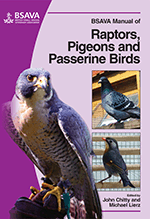
Full text loading...

Raptors tend to be monogamous and pairs are more or less in close contact throughout the year; most have well demarcated territories, which are defended most strongly in the breeding system. This chapter covers normal reproduction; artificial insemination; incubation techniques; infertility; reproductive diseases; egg pathology and hatching problems; and neonatal mortality.
Raptors: reproductive disease, incubation and artificial insemination, Page 1 of 1
< Previous page | Next page > /docserver/preview/fulltext/10.22233/9781910443101/9781910443101.21-1.gif

Full text loading...



















